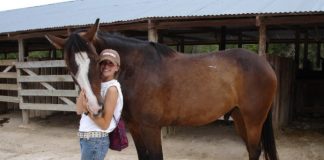
A veterinary colleague on social media recently posted a meme and a long, frustrated rant that made me simultaneously laugh and cringe in sympathy. The meme read:
I also laughed because 15 years ago, this phrase would have made no sense.
I won’t repeat her rant that followed, as much of it was unprintable, but suffice it to say that she got her point across. While I don’t take pleasure in my colleague’s frustrations, it felt good to know that I wasn’t the only veterinarian getting hounded for free advice. It made it clear boundaries must be set as a vet in the age of social media.
Distant Acquaintance
I am routinely accosted on my personal social media with photos of Fido’s runny poop and monologues about Carrot Cruncher’s lameness from people that I knew from school because our gym lockers happened to be in the same row.
A solid percentage of my late-evening and weekend messages come from people that I don’t remember meeting. They’ll ask me to approve requests for prescription medications for an animal that I’ve never laid eyes on (um … no), or they’ll call and text me for advice about their friend’s rescue donkey and send me pre-purchase exam X-rays on a horse they’re planning to buy in Texas (definitely no). And all this because they watched me treat someone else’s colicking horse once.
In a memorable event, a very graphic photo of equine genitalia popped up on my phone without any accompanying explanation. I took it in stride, as I have become accustomed to routinely receiving what can only be referred to as d*** pics from owners worried about this or that scab or swelling.
Unfortunately, when the eye-popping image appeared, a male trainer was holding my phone while I worked on his horse, and he wasn’t one to miss the golden opportunity to razz his veterinarian. His colorful reaction to the picture and the conversation that followed is also unprintable, but it was in keeping with the endless opportunities for this profession to make us look completely ridiculous.
Anatomy of a Message
When a 9 p.m. Facebook message reads, “Hi Courtney!!! It’s been a long time. How are you & fam doing??? Hey, I need to pick your brain about something…” I’m immediately on guard. This message may seem innocuous, but allow me to break it down phrase by phrase.
The first phrase, “Hi Courtney!!!” is a huge red flag. The number of exclamation points used in a greeting is always inversely proportional to how well I know this person. Things will only get worse from here.
“It’s been a long time. How are you & fam doing???” More extraneous punctuation, and let’s see, it’s been a long time because the messenger and I aren’t actually friends, never talk, and they couldn’t pick my kids out of a lineup. They’re only asking how we’re doing so they can butter me up for the real reason for the communication, which will surely appear in the next sentence.
“I need to pick your brain about something.” And there it is: The real, albeit vague reason for their enthusiastic message.
They won’t tell me that this is really about their horse, because it might warn me that this isn’t really a fun and friendly social interaction, just in case I was fooled by the clever opening. Plus, the phrase “pick your brain” makes me want to throat-punch someone.
But, because I am a vet and am hardwired to respond to cries for help, I will often take the time to offer a thoughtful response rather than set appropriate boundaries with people. Early in my career, it was all about The Job. I spent hours counseling anyone who “needed” me, but oddly, they never seemed to need me enough to schedule an actual appointment.
Small Talk
Eventually, I realized two things. Most after-hours messages weren’t emergencies and could wait until business hours, and the people that I spent the most time with almost never became clients.
When I learned to say, “My consult fee is X dollars, and you can schedule during business hours and prepay on this app,” it was almost comical how quickly they disappeared from my life.
If I’m being honest, I’ve also been guilty of assuming that professionals want nothing more than to have conversations about their career. I have an embarrassing memory of interrupting a tattoo artist’s conversation to proudly show him my tattoo. I’ve also gone on about my skeletal repairs to a random orthopedic surgeon, assuming she’d be captivated by my laundry list of injuries. It never once occurred to me that this must happen to them constantly in social settings, and that they may be as weary of it as vets are.
In my defense, I will say that I wasn’t asking for free advice. Social pressure can be a formula for small-talk disasters, and often brings out the bizarre in terms of my conversational skills.
Socially Appropriate
I have another embarrassing memory of enthusiastically explaining my house-cleaning skills to a group of bewildered vet students, and pointing out all the places where dirt could “hide” in a bathroom. But questionable social skills or not, accosting a professional by flashing a tattoo, pics of runny poop (or worse), or listing one’s orthopedic woes is simply not appropriate.
Don’t get me wrong—most vets will happily look at X-rays and answer a few questions for good clients, but please ask us politely through an appropriate form of communication (which never includes our personal social media pages or while we’re at a party) and at an appropriate hour, with an offer to pay us for our time.
We may choose to decline your payment offer, especially if it’s just for a few questions. This probably seems a little paradoxical given that I’ve just spent an entire column fussing about abuse of veterinarians, but this is often how we respond when we’re treated with respect and courtesy.
This edition of Vet Adventures with Courtney Diehl, DVM about personal boundaries appeared in the April 2022 issue of Horse Illustrated magazine. Click here to subscribe!





